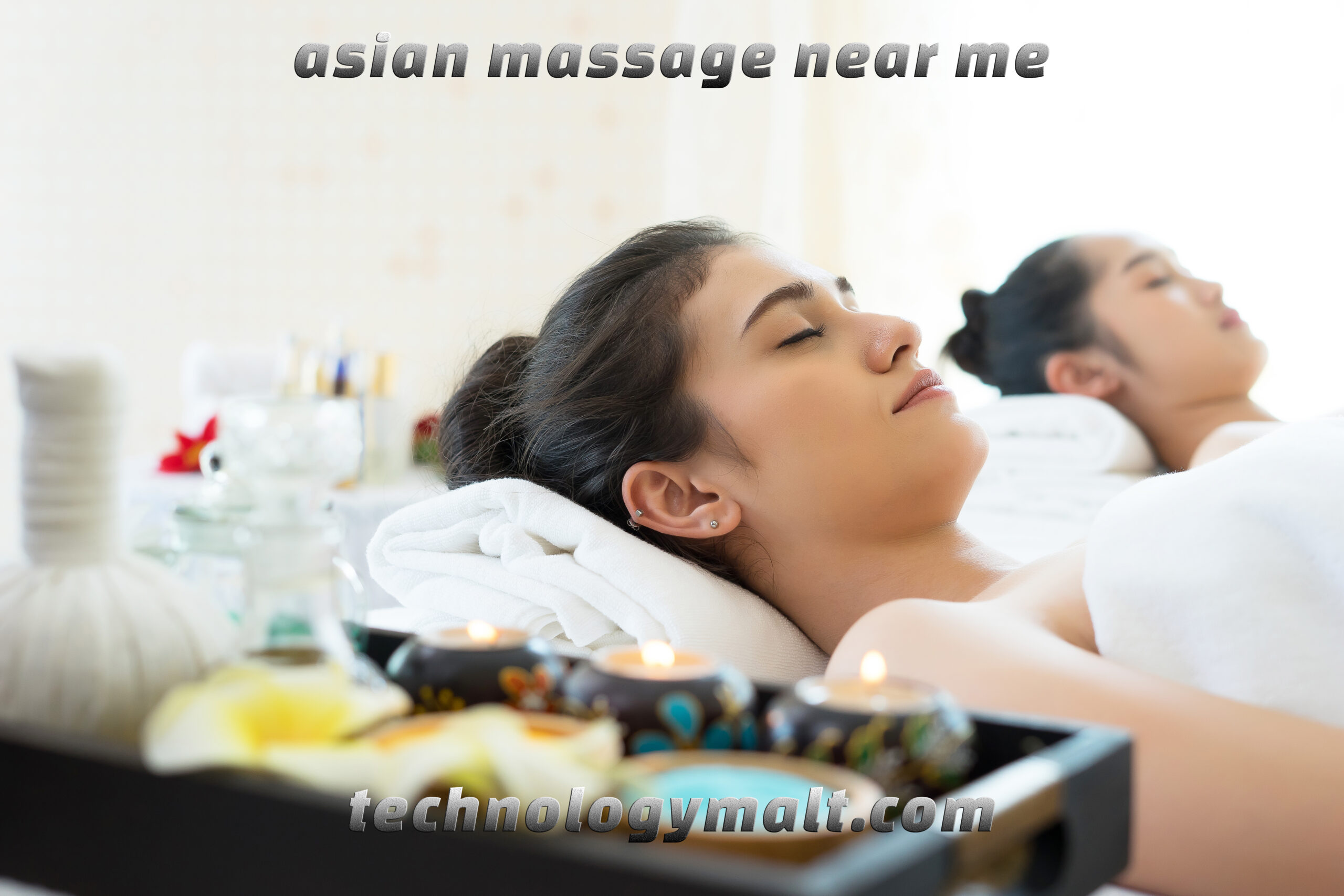Introduction
In today’s fast-paced world, finding effective ways to relax and de-stress has become more crucial than ever. Many individuals now turn to massages to relieve both physical and mental tension. Specifically, Asian massage therapies, renowned for their holistic approach, have gained significant popularity worldwide. So, if you’re searching for “asian massage near me ,” it’s important to understand the different types, the benefits, and what to expect during a session.
In this article, I will explore various Asian massage techniques, highlight their health benefits, and offer tips on how to find the best option near you.
Understanding Asian Massage Techniques
Traditional Chinese Massage (Tui Na)
One of the most well-known forms of Asian massage is Tui Na, a technique that has been practiced for thousands of years in China. This form of massage focuses on stimulating specific pressure points and energy channels throughout the body. By using techniques like kneading, rolling, and pressing, the therapist works to relieve pain and improve the flow of energy within the body.
As a result, the primary goal of Tui Na is to balance the body’s internal energy, also known as “Qi.” Maintaining this balance is essential for overall health and wellness. Additionally, Tui Na promotes relaxation, alleviates pain, and enhances emotional well-being. For individuals dealing with chronic pain or muscle stiffness, Tui Na can provide significant relief and is highly recommended.
Thai Massage
Another popular Asian massage therapy is Thai massage, which blends acupressure, yoga-like stretching, and deep tissue manipulation. Unlike many traditional massages that take place on a table, Thai massage is performed on a mat, allowing more freedom for movement. The therapist uses not only their hands but also elbows, knees, and feet to manipulate the body into various positions.
Thai massage primarily promotes flexibility, increases relaxation, and balances energy throughout the body. Moreover, the stretching component of this massage improves joint mobility and muscle elasticity. This makes Thai massage particularly beneficial for individuals who lead sedentary lifestyles or want to restore their body’s natural flexibility. Therefore, if you’re looking for a more invigorating and rejuvenating experience, Thai massage might be the ideal choice for you.
Japanese Shiatsu Massage
Similarly, Shiatsu is another Asian massage technique that originated in Japan and focuses on restoring energy balance in the body. This method involves applying firm pressure to specific points using fingers, thumbs, and palms, helping to stimulate the body’s natural energy flow. As a result, Shiatsu promotes relaxation, reduces tension, and improves overall well-being.
Unlike other forms of massage, Shiatsu does not use oils or require undressing, which makes it a convenient option for individuals seeking a less invasive experience. Additionally, this massage is performed through light clothing and is especially effective in relieving headaches, muscle tension, and stress. If you are seeking relaxation without the need for oils or heavy manipulation, Shiatsu could be an excellent fit.
Health Benefits of Asian Massage
Stress Relief and Mental Clarity
First and foremost, one of the most immediate benefits of an Asian massage is its ability to relieve stress. By stimulating specific points and energy channels, Asian massage techniques reduce physical tension and mental fatigue. In turn, this promotes deep relaxation. Additionally, the combination of physical manipulation and a calming environment improves mental clarity and overall mood.
Studies reveal that massages reduce cortisol levels, which are responsible for stress, and increase serotonin and dopamine, the body’s “feel-good” hormones. Consequently, many people experience a profound sense of calm after an Asian massage session, making it an excellent option for stress relief.
Improved Circulation
Another significant advantage of Asian massages is their ability to enhance circulation. Techniques like Tui Na and Thai massage focus on stimulating blood flow throughout the body. As a result, these massages deliver more oxygen and nutrients to your muscles and tissues. Not only does improved circulation aid in the healing process, but it also helps remove waste products from the body.
In addition to promoting better circulation, regular massage sessions can help manage conditions such as high blood pressure, fatigue, and chronic muscle stiffness. Improved circulation also strengthens the immune system, allowing your body to ward off illnesses more effectively.
Pain Management
For those suffering from chronic pain, Asian massage therapies offer excellent solutions. By targeting specific pressure points and manipulating muscles, Asian massages can relieve tension and reduce discomfort in key areas such as the neck, back, and shoulders. Furthermore, Asian massage can provide ongoing relief for individuals dealing with chronic conditions like arthritis, migraines, or fibromyalgia.
Rather than relying solely on pain medications, many individuals incorporate regular massage therapy into their holistic pain management routine. In doing so, they find substantial relief from persistent aches and pains, making massage an effective alternative for long-term care.
Finding the Right Asian Massage Near You
Research Local Options
When searching for “Asian massage near me,” it is essential to begin by researching various spas and massage centers in your area. Reading online reviews and client testimonials provides valuable insights into the services offered and the quality of the therapists. These reviews also help you identify which massage centers specialize in the type of therapy you’re interested in, such as Tui Na, Thai massage, or Shiatsu.
Additionally, ensure that the massage therapists are licensed and experienced in the specific techniques you’re seeking. The right therapist will ensure that your session is both relaxing and effective, maximizing the benefits of your massage experience.
Ask About Services and Specializations
Because not all massage centers offer the same services, it is important to inquire about their specializations. Some places may focus more on therapeutic treatments, such as deep tissue massage, while others might emphasize relaxation and spa-like experiences. If you have specific health concerns, such as chronic pain or limited mobility, communicate these needs to the therapist in advance. By doing so, the therapist can customize the massage to meet your individual requirements.
Consider the Ambience and Atmosphere
While researching local options, it’s important to consider the overall ambience and atmosphere of the massage center. A serene and calming environment greatly enhances the massage experience, making it easier to relax. Many Asian massage centers use soothing music, gentle lighting, and aromatic oils to create a peaceful setting. Visiting the center beforehand gives you a better idea of whether the environment suits your preferences.
Additionally, the atmosphere plays a crucial role in your overall satisfaction. Choosing a location that feels comfortable and welcoming can make a world of difference in your ability to unwind during the session.
Tips for a Great Massage Experience
Communicate with Your Therapist
Before the massage session begins, it is important to openly communicate with your therapist. Let them know about any specific areas of discomfort or pain you may have. By providing this information, the therapist can focus on those areas, ensuring you receive targeted relief.
During the session, if the pressure is too light or too intense, don’t hesitate to speak up. Therapists want to ensure your comfort, and adjusting the pressure based on your feedback will make your experience more enjoyable.
Hydrate Before and After
Hydration is key to a successful massage experience. Drinking plenty of water before and after the session helps flush out toxins that are released during the massage. By staying hydrated, you can reduce post-massage soreness and enhance the overall benefits.
Additionally, avoid heavy meals before your massage. Instead, opt for a light snack to maintain energy without feeling bloated or uncomfortable during the session.
Plan Time for Relaxation
After your massage, take some time to relax and enjoy the lasting effects. Jumping back into a busy schedule immediately after the session may undo some of the relaxation you achieved. Instead, plan to rest for a little while afterward, perhaps with a cup of herbal tea or a short nap. This allows your body to fully absorb the benefits and prolongs the calming effects of the massage.
Conclusion
In conclusion, Asian massage offers numerous benefits, from stress relief to improved circulation and pain management. Whether you prefer Tui Na, Thai massage, or Shiatsu, finding the right “Asian massage near me” can significantly enhance your physical and mental well-being. By taking the time to research local options, communicate your needs with your therapist, and create a relaxing post-massage routine, you can make the most of this holistic therapy. Embrace the healing power of Asian massage and experience a renewed sense of peace and vitality in your life.











